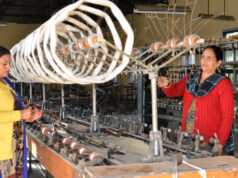Shimla – In a significant move towards forest management and economic growth, the Himachal Pradesh government has introduced a new Standard Operating Procedure (SOP) for cutting rotting dry trees in the state’s forests. Chief Minister Sukhvinder Singh Sukhu announced the SOP on Tuesday, highlighting the streamlined process for managing these damaged trees.
Under the new guidelines, forest guards are now authorized to permit the cutting of up to two dry trees at their discretion, while forest division officers can approve the cutting of up to 25 trees. This change aims to facilitate quicker decision-making and reduce bureaucratic delays in managing forest resources.
The need for updated SOPs comes on the heels of guidelines issued last year, which led to the successful processing of 15,000 damaged trees by the forest department and the corporation. The sale of wood from these trees significantly boosted the state’s revenue, with royalty income surging from 35 crores to 70 crores rupees within just one and a half years.
In a strategic shift, the state government has decided to close the construction branch of the forest department. This decision aims to refocus the department’s efforts on core forestry activities, enhancing the management and conservation of forest resources. Additionally, employees of the forest department will now be rewarded for exemplary work, from the forest beat to the circle level, as part of an incentive scheme designed to motivate better performance and innovation in forest management.
Chief Minister Sukhu’s announcement underscores the government’s commitment to sustainable forest management and economic development. By addressing the issue of rotting trees efficiently, the state aims to preserve its forests, prevent potential hazards, and generate revenue that supports the local economy.
These measures are expected to not only improve the health of Himachal Pradesh’s forests but also contribute to the state’s economic stability, ensuring that natural resources are managed responsibly and sustainably for future generations.














